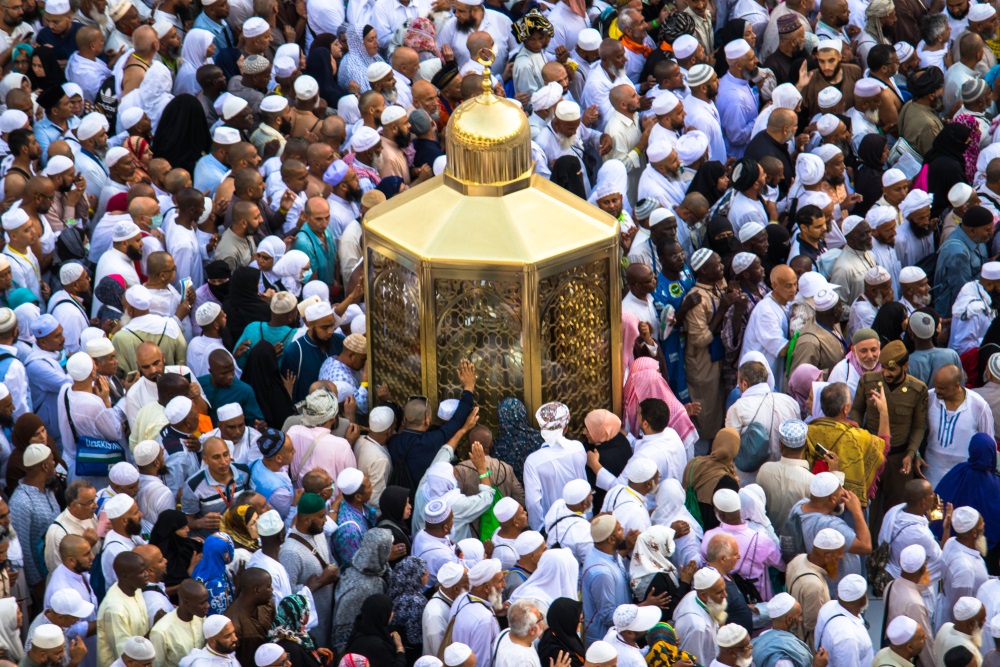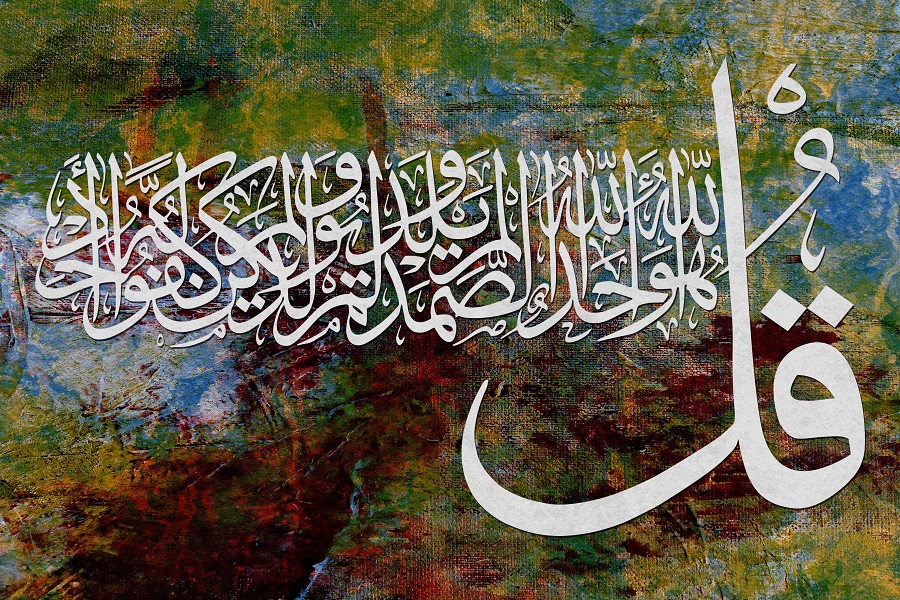Maqam-e-Ibrahim which means ‘the place where Prophet Ibrahim (PBUH) stood’ is a place just in front of Kabbah located in the Mataf (the circular area around Kabbah where pilgrims perform Tawaf). It is a blackish-red stone with a little bit of whiteness, which has the footprints of Prophet Ibrahim (PBUH). The stone is placed in a glass dome through which it is visible to the pilgrims. The glass dome is covered by a golden cage that has a beautiful pattern engraved on it. The cage has an ornamented and embroidered curtain called ‘Sitara’. The stone measures 8 inches in height, 14 inches in width, and 15 inches in length.
Let’s see the history of Maqam-e-Ibrahim and the story of its existence.
Maqam-e-Ibrahim History
Situated 46 feet away from Kabbah, Maqam-e-Ibrahim is the stone on which footprints of Prophet Ibrahim (PBUH) are imprinted. Different traditions revolve around the history of Maqam-e-Ibrahim, of which one of the most accepted stories is that while the holy Kabbah was being built, Prophet Ibrahim (PBUH) stood on the stone to supervise the construction. By Almighty Allah’s grace, the stone softened and thus imprints of the Prophet’s feet were engraved on the stone.
Another very accepted story is that as Prophet Ibrahim (PBUH) was building Kabbah, he used to stand on the stone and lift his son Prophet Ismail (PBUH) on his shoulders to place stones in high places. Also, it is believed that Prophet Ibrahim (PBUH) used to stand on the stone, now known as Maqam-e-Ibrahim to call people towards Islam, the religion of Almighty Allah and preach them about it.
It is also said that Prophet Ibrahim (PBUH) used to stand on Maqam-e-Ibrahim and call people to perform the holy pilgrimage to Mecca. All the same, it is considered a symbol of dedication to Allah.
Importance of Maqam-e-Ibrahim
The importance of Maqam-e-Ibrahim is highlighted in the Holy Quran by Almighty Allah; it goes as:
“….Take as your place of worship the place where Ibrahim(PBUH) stood (to pray).”
– Surah Baqarah:125
Here, Allah instructs all the pilgrims to come in front of Maqam-e-Ibrahim after completing all seven rounds around Kabbah or after completing a Tawaf and offer two rakats of salah for Tawaf. It is recommended to recite Surah Al Kafirun after Surah Al Fatiha in first rakat and Surah Ikhlas in second rakat, though reciting other surahs is also allowed. Thus, Maqam-e-Ibrahim is an inevitable part of the history of Kaaba.
Maqam-e-Ibrahim is also a symbol of the dedication and hardships of Prophet Ibrahim (PBUH) and Prophet Ismail (PBUH) towards Allah Almighty. It is a prime historical artefact that all pilgrims visit during Umrah and Hajj to pay their respects.
Suggested Read: Kiswa Of Kaaba – The Holy Cloth That Adorns The House Of Allah
Hadiths about Maqam-e-Ibrahim
According to Sa’eed bin Jubair, the Prophet said: “The stone is the station of Ebrahim. Allah made it soft and made it a mercy. Ebrahim would stand on it and Ismail would hand the stones up to him.” [Muthir Al-Gharam]
Ibn Kathir narrated, “Proclaim (O Ebrahim) the Hajj to the people, calling them to come on pilgrimage to this House which We have commanded you to build.”
To which the Prophet said, “O Lord, how can I proclaim it to the people when my voice does not reach them?”
Allah then said, “Call and We will convey it.” So he stood at his Maqam (station) and said: “O people, your Lord has taken a House, so come to it on pilgrimage.”
Juhm bin Hudhayfah says that the Prophet also mentioned, “From all the children of Ebrahim it is I who resembles him the most.” [Bukhari]
Surah and hadiths highlight the importance of station of Ibrahim and encourage Muslims to pay their respects here. If you are visiting the holy Kaaba, it is one of the places to seek blessings of Allah.









